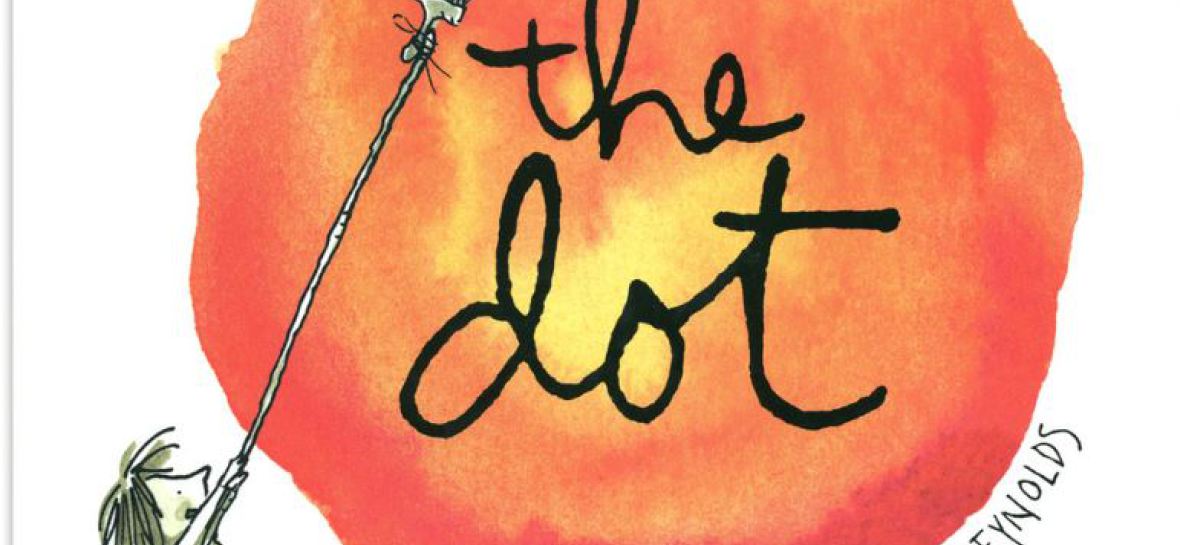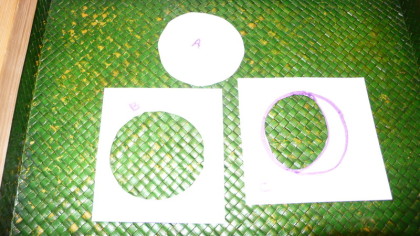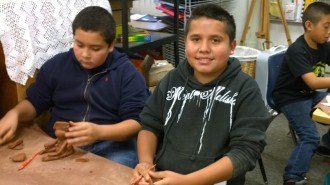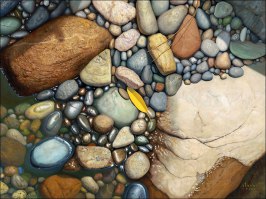

Moon Watching With 3rd Graders
Some people think there is a man in the moon, in some parts of the world they think it is a rabbit. Yet Native American legends say it is a worman. What do you see when you look at the moon?
Comments
-
Damaso (Tuesday, November 19 13 05:15 pm EST)
I think a cow is in the moon because it looks like a cow's face on the moon. Damaso
-
Keith (Tuesday, November 19 13 05:16 pm EST)
I think there is a man and a lady on the moon because people could fly. That is why we see shooting stars. Keith
-
Loreli (Tuesday, November 19 13 05:17 pm EST)
I think there is a fox in the moon because it looks like a fox in the sky. Loreli
-
Javier (Tuesday, November 19 13 05:22 pm EST)
I think a fox is in the moon. Because they have pointy ears.
Javier -
Carolina (Tuesday, November 19 13 05:23 pm EST)
I think there is a lady in the moon because it looks like a lady with long hair.
Carolina -
Alejandra (Tuesday, November 19 13 05:25 pm EST)
I think there is a cat on the moon because it looks like a face of a cat and the moon is a bowl of milk.Alejandra
-
Jacarion (Tuesday, November 19 13 05:26 pm EST)
I think there is a man that pushed the moon and turns it on at night. Jacarion
-
Ronald (Tuesday, November 19 13 05:29 pm EST)
I think there is a man that is jumping up and down in the holes on the moon because he didn't see the holes and he jumped into one because he was being chased by aliens, Ronald
-
Maliyah (Tuesday, November 19 13 05:31 pm EST)
I think there is a man on the moon because I see eyes, nose, and a mouth only when it is a crescent moon because I do not see the mouth or a nose on a full moon. Maliyah
-
Ezari (Tuesday, November 19 13 05:33 pm EST)
I think there is a cow in the moon because it looks like that animal is in the moon,Ezari
-
Maggie (Tuesday, November 19 13 05:34 pm EST)
I think there is a cat in the moon because I can see the little whiskers.
Maggie
Painter to the Moon
Cheryl Schellenberg
Visual Arts/Reading/Writing Specialist
How slim and sharp is the moon tonight!
How slim and sharp and ghostly white
Is the same curved crook of the moon tonight! ~ Langston Hughes
Some of the ideas for this moon inquiry and the chalk pastel lesson comes from
“Moon Journals: Writing, Art, and Inquiry through focused Nature Study,”
by Joni Chancer and Gina Rester-Zodrow, but enhanced to meet common core standards and to fit the needs of my students and myself.
Essential Question:
Why does the moon disappear and reappear?
What rhythms mark our time on earth and in this space?
Over View
Students nightly record in their moon journals what they see in the night sky and sketch what the moon looks like for an entire lunar cycle. They share their findings and ponderings daily in their classroom. Weekly, students visit the art studio to create big pieces that reflects their observations. This is also the time I introduce them to key artists, their work, and new media. The following are images by our artists of study.
To Ponder: What does it mean to pose essential questions?
Short, Harste, and Burke (1996) describes how “The focus of an inquiry is not always in the form of a specific question but can be a wondering about something we want to pursue. As we work through inquiry we do not usually end with one answer or even a set of answers. Our problem solving does not narrow our perspective but gives us more understanding questions and possibilities than when we started.”
My Objectives for the Learners
Students will discover we all have a unique point of view.
Students will write nightly about their observations of the moon and the night sky. They will share their observations, sketches, and questions in class daily. We all see the same moon but our experiences will be unique and our writing and art original.
Students will discover new artists and how they represent the moon in different settings, different time periods, using different media.
Students will gain insights into the styles and times of the artists, Marc Chagall, Georgia O’Keeffe, and Eric Carle. They will view, discuss, and explore their media.
Students will engage in creating original works of art based on the phases of the moon. They will use the elements of art and apply principles of design.
- One of the original pieces will be a masked moon chalk pastel landscape, using blending shading and masking techniques.
Students will write throughout the lunar cycle
Students will engage in writing observation using sensory details, and critically describing the artistic processes they use to create their art. Students will write their own art critiques for each major project completed in the art room.
Common Core English Language Arts and Literacy in History and Social Studies Anchor Standards taught in this Lesson
Reading #7 Integrate and evaluate content presented in diverse media and formats including visually and quantitatively as well as in words.
Writing #2 Write informative/explanatory texts to examine and convey complex selection organization and analysis of ideas and information clearly and accurately through the effective selection, organization, and analysis of content.
Speaking and Listening#2 Integrate and evaluate information presented in diverse media and formats including visually, quantitatively, and orally.
Language Arts#6 Acquire and use accurately a range of general academic and domain specific words and phrases sufficient for reading, writing, speaking and listening at the college and career readiness level.
California Visual Arts Standards
Artistic Perception: Students talk about art by processing, analyzing, and responding to sensory information through the use of the language and sills unique to the visual arts.
Creative Expression: By creating and participating in the visual arts, students apply processes and skills in creating works and use a variety of means to communicate meaning and intent in their own original works.
Aesthetic Valuing: Students engage in analyzing and critique works of visual art. Students critically assess and derive meaning from artwork based on elements and principles of the visual arts, aesthetic qualities, and human responses.
Historical and Cultural connections: Students are coached to look beyond the art making or art viewing to see the bigger meaning and ask, how do people from all over the world past and present view this idea, or subject? What influenced them and what influences my point of view?
Prior Knowledge:
What do we know about the moon? Students will work in cooperative groups of four to create a list to share with the class of what they know about the moon and what questions they might have. Then as a group, they present to the class and we create an official class list of what we know and what we want to know.
We then examine the list to determine what might be facts and what might be opinion. We also look at the information and categorize it into non-fiction and fiction. An example might be the moon orbits the earth: fact, nonfiction. People say the moon is made of cheese: opinion, fiction.
I leave at this point a poster paper up for kids to come and write their questions about the moon and night sky that we can further research.
Students are given their moon journals and instructions on how to use them for the entire lunar cycle. Great excitement surrounds this moment. And we begin our new experience on the night of the new moon.
This was an entry by my son Russell, age 8
New Moon. Because my mom’s making her class look for the moon, she is making us do it too. So here we go out into the cold, into the field to look for a new moon. Is she crazy? It is the same one every night. “New moon, new moon,” Patrick and I call. There is no moon. “Mom,” I tell her, “I guess God forgot to hang the moon out tonight.” Oh well!
Teaching the Lesson
In our art class, I show the students the first work of art, Marc Chagall’s work. Then in subsequent lesson we view works of Georgia O’Keeffe, and Eric Carle
We scan the art work for its sensory and emotional properties. I don’t tell them right away the title or the artist. I let them think about a possible title for themselves. Then we look at it for is artistic properties like how the elements and principles were applied. It is then that I tell them the title and invite them to create their first major work in chalk pastel, “The Masked Moon.”
- Cover work space because chalk is messy.
- Draw 2 circles 3 inches in diameter on cardstock.
- Inside on the second circle draw a crescent moon shape.
- Using scissors cut out the shapes like above. The cut out circle is labeled Mask A. The now empty or negative space circle is Mask B, and last one with a positive crescent space is Mask C.
- Lay Mask A of your full moon on your construction paper canvas and set aside.
- Select pastels you want for your night sky and using one color at a time (Don’t mix) lay down a solid swatch of color by rubbing the pastel on the scrap paper. Use the side of the pastel to do this.
- Squish up a tissue and dab it in the pastel color picking up the pastel dust, or as we call it “the moon dust!”
- Then with a partner’s help go back to you canvas and hold the moon mask in place and rub the pastel tissue over the mask and onto the paper with straight even strokes as though you were creating sun rays but instead you are creating moon beams.
- Repeat the process for the other sky night colors using a clean tissue each time. Remove the moon mask and you will see a negative moon surrounded by moon beams. If you want your moon to be full stop at this point or continue on to make a mask.
- Take mask B and place it over the full moon circle, tape down if you like. Rub some gold or yellow chalk onto your scrap paper, and then collect the dust with a tissue and use the tissue to rub the chalk into the negative space of the moon. When you lift the mask, your moon will be yellow or gold.
- Now tape down mask Cover your golden moon. Using again your scrap paper, lay down a swatch of black pastel or grey, and gather the dust and gently rub the exposed area of the moon with the tissue. Lift mask C and you will have a gold crescent moon shining in the night sky.
- Finish your composition by adding buildings, trees, fields, houses, or even yourself and animals. You could create a stencil for any of those things and follow the procedures you just did.
- Lastly spray your work with a fixative.
Chancer J., Restr-Zodro G. 1997. Moon Journals. (ppgs 146-147)Portsmouth, NH Heineamann
Assessing the Lesson: Art Criticism
Students may answer the following question first in small groups verbally and then in an artist interview or write it as an artist statement. This then may be exhibited with the art for a student exhibit.
Describe: Elements and Subject
What objects did you include in
you pastel?
Where are the light areas?
Where are the dark areas?
Analyze: Composition & Design
How did you use emphasis to create a center of interest?
Interpret: Meaning & Content
Interpret the mood you created.
Reveal any metaphors you created
How would the mood or feeling of your artwork change if you had used light values only?
Evaluate: Skill and Technique
Use the 1 to 5 rubric to evaluate your skill and technique.
Grading : Students use a 1 to 4 point rubric that may be set by teacher but even better by students with teacher support.
For Future Creation & Connection
What else could you draw next and show a center of interest ?
Culminating Activity
The culminating activity may be a student performance of a dance making use of silhouettes, shadow puppets, and music depicting the phases of the moon.
Artful Teaching
Mrs. Schellenberg & Young Artists
Ralph Waldo Emerson's Poem: Success- to leave the world a bit better, whether by a healthy child, a garden patch or a redeemed social condition; To know even one life breathed easier because of you.
Thank you AT&T
We used the wiring for our artful galimotos













